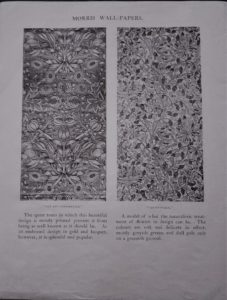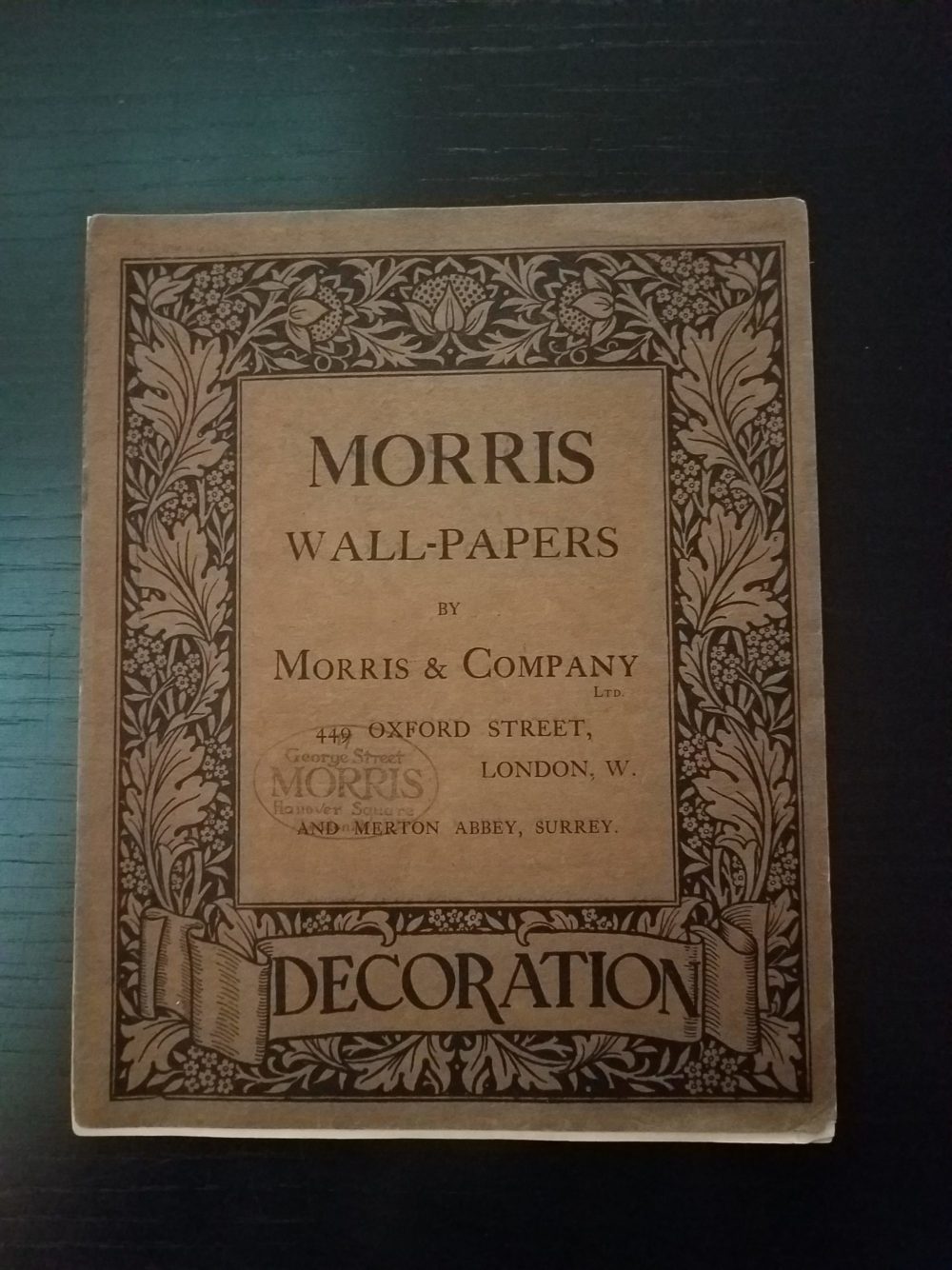I could wax poetic on the virtues and talents of William Morris (1834-1896), such as his renowned association with the British Arts and Crafts movement, his contribution to the revival of textiles, the way he established concepts of modern fantasy, and his socialist endeavors. Instead, let’s view this rare trade catalog published by the Morris & Company Decorators in London, ca. 1910.
On April 11, 1861, Morris and several colleagues formed Morris, Marshall, Faulkner and Company. The firm’s first products were mural decorations, architectural drawings, stained glass, metalwork, and furniture. The partnership dissolved by 1875, but Morris reorganized the business as Morris & Company, moving to Oxford Street by 1877. Morris’s textiles were first restricted to embroidery and did not use “modern” industrial techniques. His textiles and wallpapers were the earliest and most important part of his work as an interior designer and manufacturer.

Lily and Pomegranate and Honeysuckle
Known for a medievalist style and use of naturalistic imagery, between 1862 and 1866, three repeating patterns for the wallpaper Daisy, Trellis and Fruit (Pomegranate) became his most famous and popular item for sale. An excerpt from the trade catalog shows two examples of wallpapers, Lily and Pomegranate and Honeysuckle. The descriptions “sell” the images by providing color characteristics. Although this catalog is not in color, it still highlights the beauty and artistry of the wallpaper. Morris produced these patterns not just on wallpaper, but on textiles as well. Cooper Hewitt’s collection holds several examples of wallpapers and textiles by Morris & Company, such as the Trellis and Tulip and Rose patterns.
Morris entrusted production to Jeffrey and Company of Islington, which used modern distemper colors and strategically placed wood blocks for manufacturing. This lead to the height of Morris & Company’s commercial success in the mid-1880s. Morris’s death in 1896 did not result in a decrease in production. But by the end of the 19th century, his patterns had fallen out of fashion. In 1905, a board of directors were established with the hope of reviving past popularity. Lack of raw materials and workers, along with the impending World War, lead to the voluntary liquidation of the firm by March 21, 1940. Sanderson has continued to successfully use Morris’s prints and is producing them on wallpaper, textiles, and prints available today.
Nilda Lopez is the Library Technician at Cooper Hewitt, Smithsonian Design Library.
